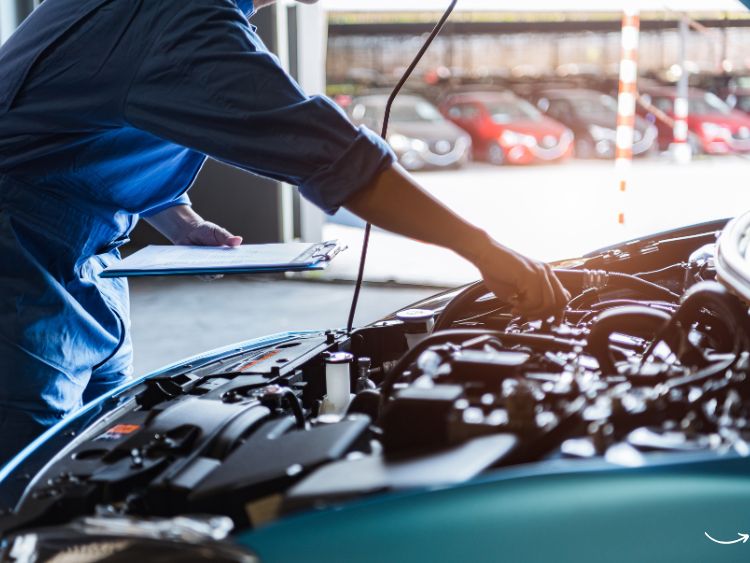Maintaining the fleet of vehicles in the Air Force is no small feat. It’s a complex, critical task that ensures the mobility and operational readiness of military forces. From routine checks to major overhauls, Air Force vehicle maintenance is the backbone of keeping everything moving smoothly.
When you think about the Air Force, you probably picture jets soaring through the sky, right? But what about the vehicles on the ground? The ones that transport troops, equipment, and supplies? These vehicles are just as crucial to the mission’s success as the aircraft. The maintenance of these vehicles is a meticulous, demanding job that requires a unique set of skills and unwavering dedication.
The Importance of Vehicle Maintenance in the Air Force
Air Force vehicle maintenance isn’t just about changing oil or fixing flat tires. It’s about ensuring the entire fleet is in top-notch condition, ready to support any mission at a moment’s notice. This includes everything from heavy-duty trucks and tactical vehicles to forklifts and fire trucks.
Ensuring Operational Readiness
Operational readiness is the cornerstone of military effectiveness. If vehicles aren’t maintained properly, they can become liabilities rather than assets. Imagine a scenario where a crucial mission is delayed or fails because a vehicle breaks down. That’s a nightmare the Air Force can’t afford.
Extending Vehicle Lifespan
Proper maintenance extends the lifespan of vehicles, saving the Air Force significant amounts of money in the long run. With budgets always under scrutiny, maintaining the fleet efficiently is both a logistical and financial necessity.
Key Aspects of Air Force Vehicle Maintenance
Air Force vehicle maintenance is a multi-faceted process that involves several key aspects. Here’s a closer look at what goes into keeping these vehicles in tip-top shape.
Regular Inspections and Servicing
Routine inspections and servicing are the first lines of defense in vehicle maintenance. These regular checks help identify potential issues before they become major problems. Technicians follow strict schedules and checklists to ensure every component of the vehicle is inspected.
Detailed Record-Keeping
Maintaining detailed records is crucial. Every service, repair, and inspection is documented meticulously. This not only helps in tracking the vehicle’s history but also aids in predictive maintenance, allowing technicians to anticipate and prevent issues before they arise.
Specialized Training and Certification
The personnel responsible for vehicle maintenance undergo extensive training and certification. This ensures they are equipped with the latest knowledge and techniques in vehicle maintenance. The Air Force invests heavily in its technicians to maintain the highest standards of quality and efficiency.
Use of Advanced Technology
From diagnostic tools to sophisticated software, advanced technology plays a significant role in Air Force vehicle maintenance. These technologies help in accurately diagnosing issues, planning maintenance schedules, and even in training technicians through simulations.
Challenges in Air Force Vehicle Maintenance
Maintaining a fleet of military vehicles is no walk in the park. There are several challenges that technicians face regularly.
Harsh Operating Environments
Military vehicles often operate in harsh environments, from desert sands to icy terrains. These conditions can take a toll on the vehicles, making maintenance even more challenging. Technicians must be prepared to handle repairs in less-than-ideal conditions.
Limited Resources and Budget Constraints
Despite the critical nature of their work, vehicle maintenance teams often have to operate under tight budget constraints. This requires them to be resourceful and innovative in finding solutions to keep the fleet operational.
Keeping Up with Technological Advancements
Technology is constantly evolving, and staying up-to-date with the latest advancements is a challenge. Continuous training and adaptation are necessary to ensure that the maintenance processes benefit from the latest tools and techniques.
FAQs
What is the primary goal of Air Force vehicle maintenance?
The primary goal is to ensure that all vehicles are operationally ready and can support any mission at any time. This includes routine maintenance, emergency repairs, and thorough inspections.
How often are vehicles inspected in the Air Force?
The frequency of inspections varies depending on the type of vehicle and its usage. However, regular checks are a standard practice to ensure early detection of any issues.
What kind of training do Air Force vehicle maintenance technicians receive?
Technicians receive extensive training that includes both theoretical knowledge and practical skills. They are also required to obtain certifications to ensure they are qualified to handle the complex maintenance tasks.
What role does technology play in vehicle maintenance?
Technology plays a crucial role in diagnosing issues, planning maintenance schedules, and training technicians. Advanced tools and software enhance the efficiency and accuracy of the maintenance processes.
What are some common challenges in maintaining Air Force vehicles?
Common challenges include harsh operating environments, limited resources and budget constraints, and the need to keep up with technological advancements.
Summary
Air Force vehicle maintenance is a vital aspect of military operations. It ensures that all vehicles are ready to support missions, extends the lifespan of the fleet, and involves a range of complex tasks and challenges. From regular inspections and detailed record-keeping to specialized training and the use of advanced technology, maintaining these vehicles requires a high level of expertise and dedication.
Authoritative Links
In conclusion, the unsung heroes of the Air Force, the vehicle maintenance technicians, play an indispensable role in keeping the wheels of the military turning. Their work ensures that the Air Force remains a formidable force, both in the air and on the ground.
